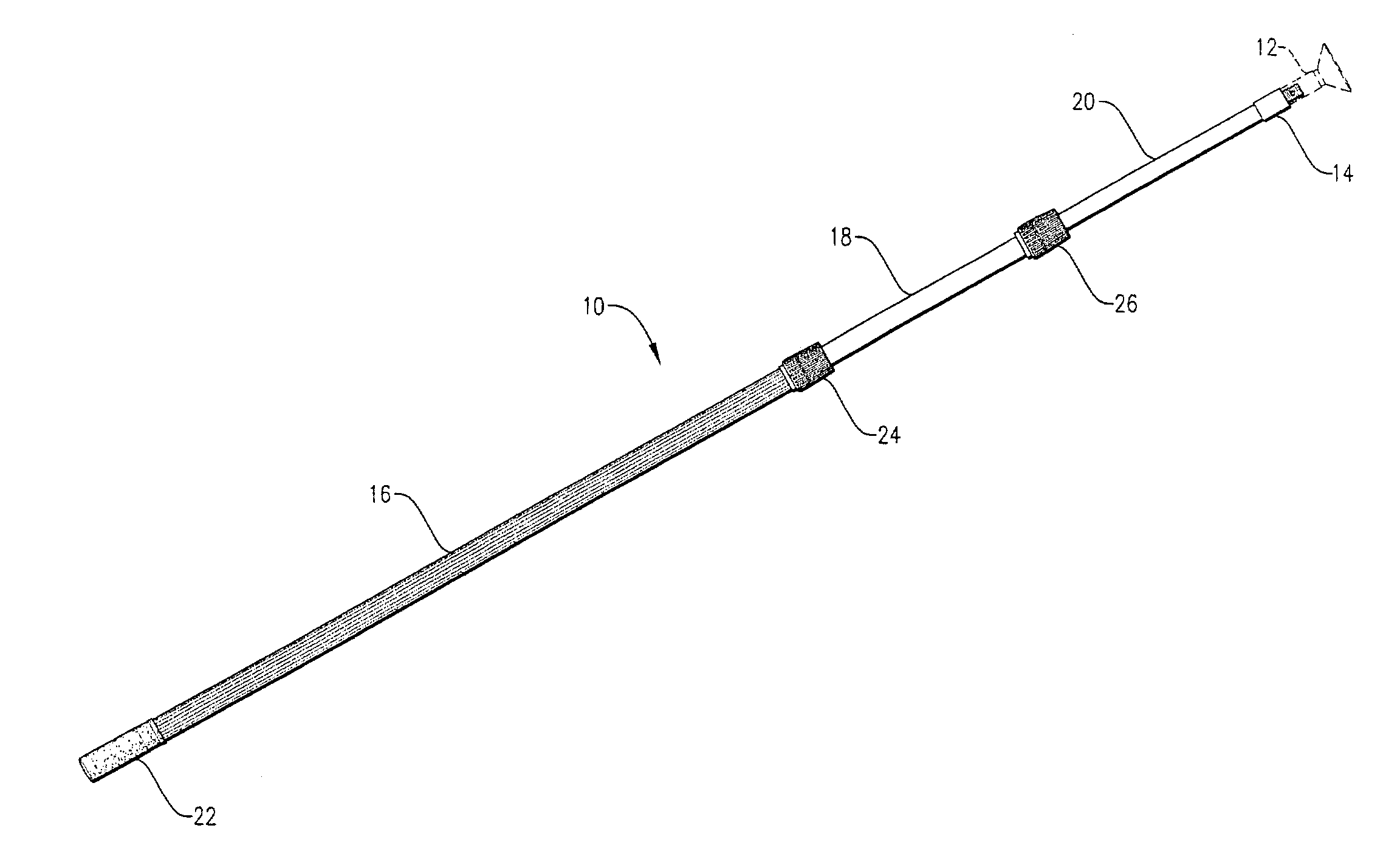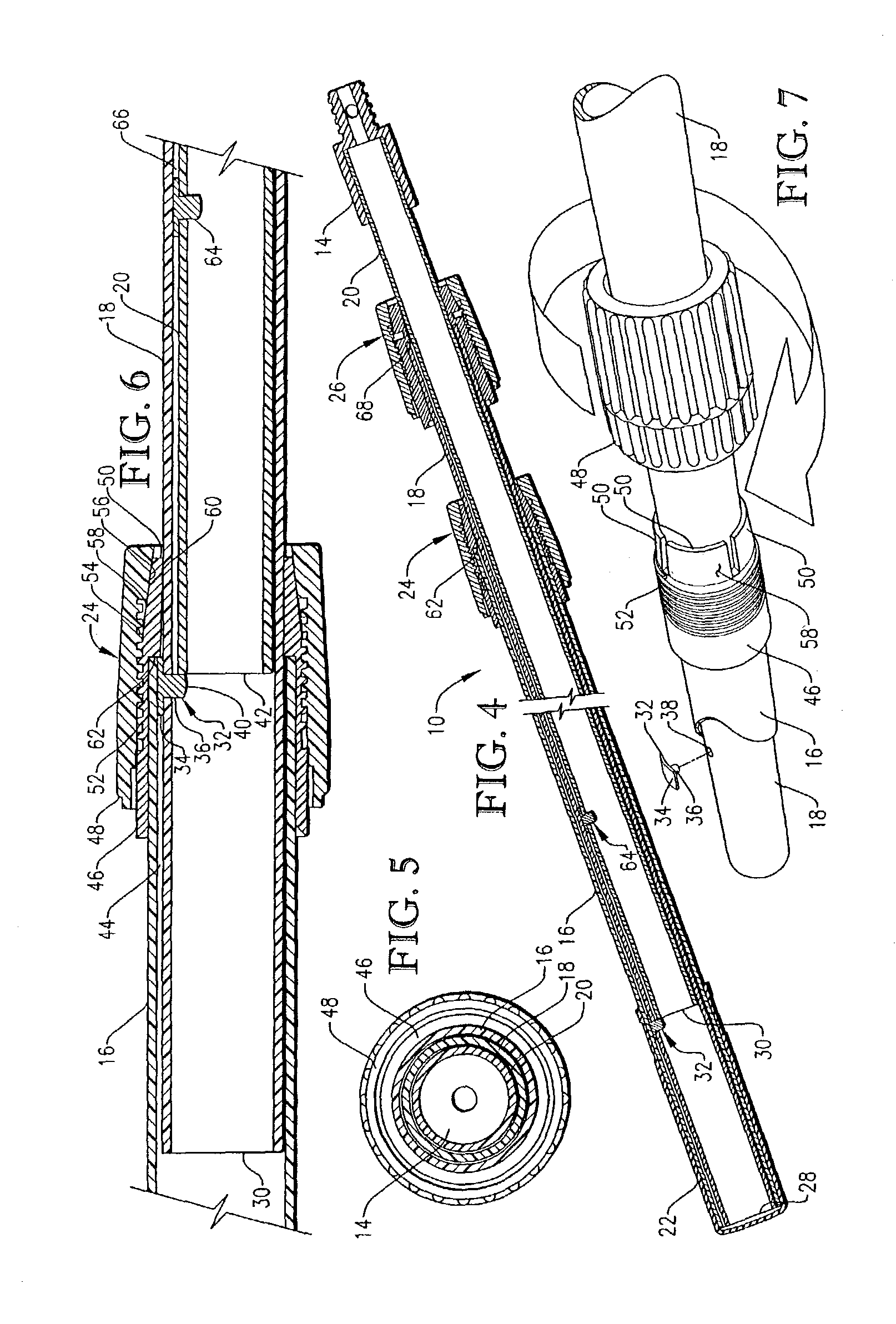Non-conductive extension pole
a non-conductive, extension pole technology, applied in the direction of rod connection, electric discharge tube/lamp manufacture, hoisting equipment, etc., can solve the problem of increasing the risk of operator injury due to electrical shock, the limitation of providing a maximum extended reach of only twice the retracted length of the pole, and the inconvenient handling and/or storage of conventional two-section extension poles having a long reach. problem, to achieve the effect of reducing the risk of electrical shock
- Summary
- Abstract
- Description
- Claims
- Application Information
AI Technical Summary
Benefits of technology
Problems solved by technology
Method used
Image
Examples
Embodiment Construction
[0021]Referring initially to FIGS. 1–3, extension pole 10 is illustrated in a partially extended position with a bulb-gripping device 12 (shown in phantom lines) coupled to a normally-upper end of pole 10 via a connector 14. It is preferred for bulb-gripping device 12 to be constructed in accordance with the description provided in U.S. Pat. No. 5,148,723, issued Sep. 22, 1992, the entire disclosure of which is incorporated herein by reference. Extension pole 10 generally comprises a first section 16, a second section 18, and a third section 20. First, second, and third sections 16,18,20 are telescopically intercoupled with second section 18 being at least partly received in first section 16 and third section 20 being at least partly received in second section 18. Extension pole 10 can be retracted and extended by sliding second section 18 into and out of first section 16 and third section 20 into and out of second section 18. Extension pole 10 further includes a hand grip 22 couple...
PUM
 Login to View More
Login to View More Abstract
Description
Claims
Application Information
 Login to View More
Login to View More - R&D
- Intellectual Property
- Life Sciences
- Materials
- Tech Scout
- Unparalleled Data Quality
- Higher Quality Content
- 60% Fewer Hallucinations
Browse by: Latest US Patents, China's latest patents, Technical Efficacy Thesaurus, Application Domain, Technology Topic, Popular Technical Reports.
© 2025 PatSnap. All rights reserved.Legal|Privacy policy|Modern Slavery Act Transparency Statement|Sitemap|About US| Contact US: help@patsnap.com



